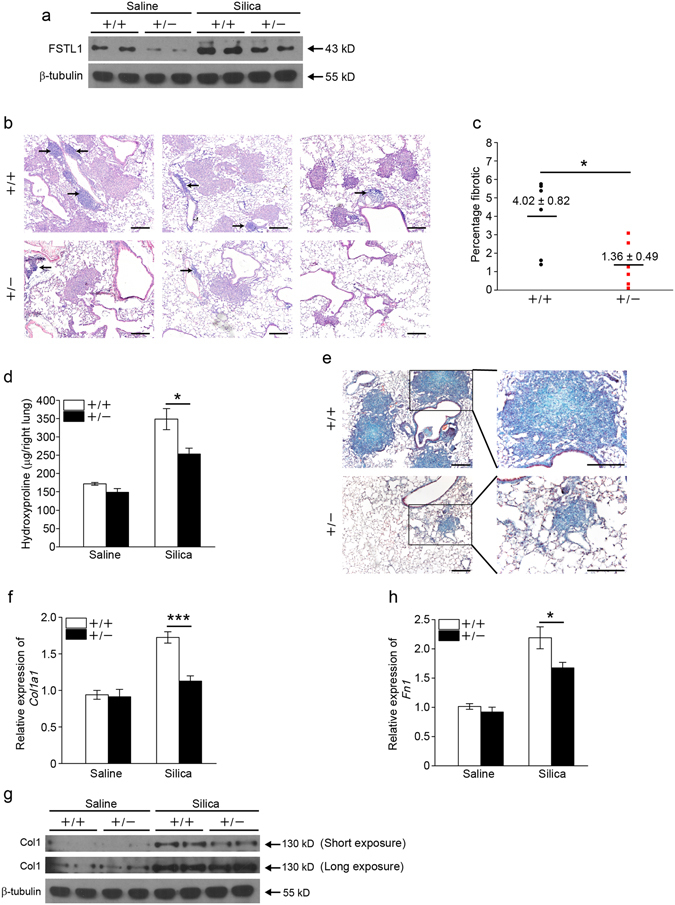Figure 2.

Fstl1 +/− mice have an attenuated pulmonary fibrosis phenotype. (a) Western blot analysis of FSTL1 expression in lung tissues of Fstl1 +/− and WT mice 21 days after saline or silica injury. β-tubulin was used as a loading control. (b) H&E staining of lung sections of Fstl1 +/− and WT mice 21 days after silica injury. Representative images of the staining are shown. Arrows show inflammatory cells. (n = 6 per group; scale bars, 200 μm). (c) Lung fibrotic score analysis of the lung sections from Fstl1 +/− and WT mice 21 days after silica injury (n = 6 per group; *P < 0.05 by one-way ANOVA followed by Student’s t test). The fibrotic area is presented as a percentage. (d) Hydroxyproline contents in lung tissues from Fstl1 +/− and WT mice were measured 21 days after saline or silica injury (n = 6 per group; *P < 0.05 by one-way ANOVA followed by Student’s t test). (e) Masson trichrome staining of lung sections of Fstl1 +/− and WT mice 21 days after silica treatment. Representative images of the staining are shown (n = 6 per group; scale bars, 200 μm). (f) qRT-PCR analysis of Col1a1 mRNA expression in lung tissues from Fstl1 +/− and WT mice 21 days after saline or silica injury (n = 3 per group; ***P < 0.001 by one-way ANOVA followed by Student’s t test). (g) Western blot analysis of type I collagen (Col1) expression in lung tissues from Fstl1 +/− and WT mice 21 days after saline or silica injury (n = 3 per group). β-tubulin was used as a loading control. (h) qRT-PCR analysis of fibronectin (Fn1) mRNA expression in lung tissues from Fstl1 +/− and WT mice 21 days after saline or silica injury (n = 3 per group; *P < 0.05 by one-way ANOVA followed by Student’s t test).
